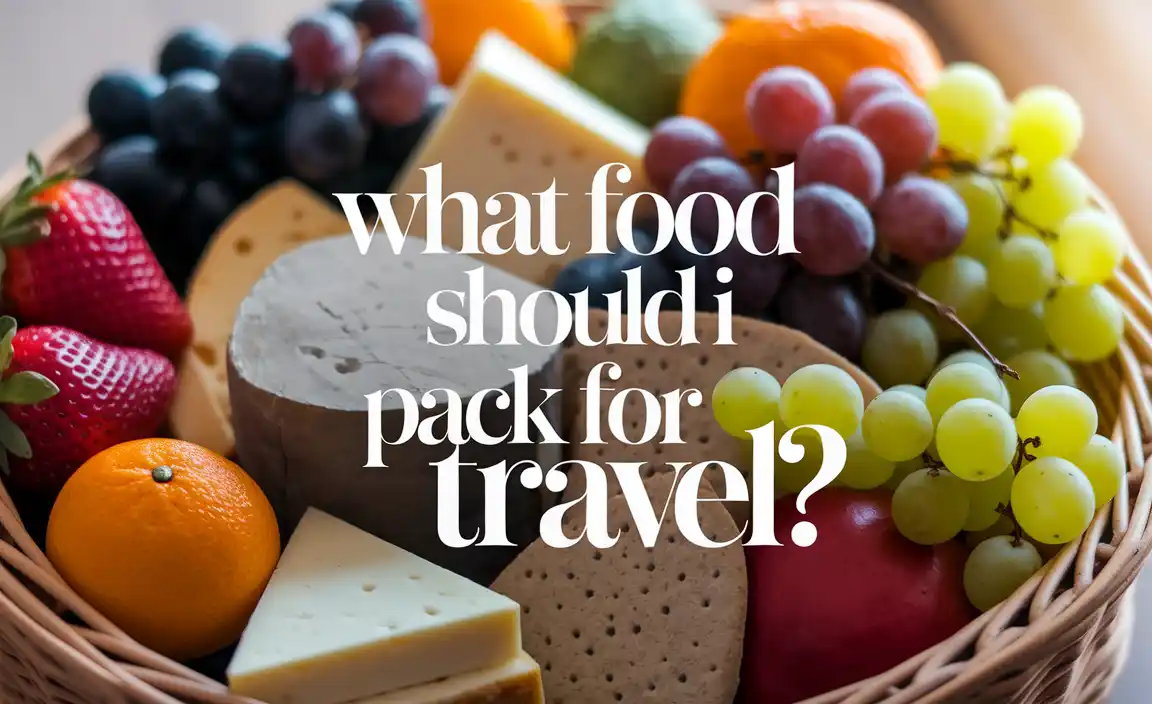Discover Bangkok’s best food neighborhoods with our beginner’s guide. We break down where to find incredible street food, fine dining, and local gems across the city, making your culinary adventure stress-free and delicious.
Welcome to Bangkok, a city that truly comes alive through its food! For many travelers, the sheer variety and vastness of Bangkok’s culinary scene can feel a little overwhelming at first. Where do you even begin to find that perfect bowl of noodles or an unforgettable curry?
Don’t worry, we’ve all been there. This guide is designed to be your friendly compass, pointing you towards the most vibrant and delicious food neighborhoods Bangkok has to offer. Get ready to taste your way through the City of Angels, one incredible bite at a time!
Why Explore Bangkok’s Food Neighborhoods?
Bangkok isn’t just a city; it’s a sprawling tapestry of flavors, and each neighborhood boasts its own unique culinary identity. From bustling street food stalls serving generations-old recipes to chic restaurants pushing the boundaries of Thai cuisine, understanding these food “districts” makes planning your meals incredibly easy and rewarding. It’s like having a map to the city’s tastiest secrets, ensuring you don’t miss out on authentic experiences and incredible value. For travelers, especially those looking for comfort and ease, knowing where to go means less guesswork and more enjoyment.
Understanding Bangkok Food Districts
Think of Bangkok’s food scene as a collection of distinct culinary hubs. Each area has developed its own character based on local history, proximity to markets, and the types of people who live and work there. Some neighborhoods are famous for their fiery street food, others for their fresh seafood, and some for their upscale dining experiences. By learning about these distinct areas, you can tailor your exploration to your cravings and discover hidden gems that might otherwise be overlooked. It’s about maximizing your limited time and ensuring every meal is an adventure in itself.
The Essential Bangkok Food Neighborhoods
Let’s dive into the must-visit neighborhoods that define Bangkok’s incredible food landscape. Each offers a unique gastronomic journey.
Yaowarat (Chinatown): A Street Food Paradise
Yaowarat is arguably the most famous and vibrant food neighborhood in Bangkok. As you step onto its bustling streets, especially in the evening, you’ll be greeted by a dazzling array of neon signs, the irresistible aroma of grilling meats, and the lively chatter of locals and tourists alike. This is the heart of Bangkok’s street food scene, a place where culinary traditions have been passed down through generations.
- What to Expect: Endless rows of food stalls and small, open-air restaurants serving an incredible variety of Chinese-Thai dishes.
- Must-Try Foods: Bird’s nest soup, seafood (grilled prawns, fish, oysters), dim sum, oyster omelets, shark fin soup (ethical considerations apply), durian, and various sweet desserts.
- Best Time to Visit: Evenings and late nights, when the street food truly comes alive.
- Why it’s Great for Beginners: The sheer density of options means you can try many things in one place. Pointing and smiling works wonders!
For a deep dive into the history and cultural significance of Chinatown, you can explore resources on the official Bangkok Metropolitan Administration website, which often highlights cultural heritage sites and initiatives.
Sukhumvit Sois: Diverse Dining Options
Sukhumvit is a massive road with countless “sois” (side streets), each offering a unique dining experience. This area is a melting pot of international and local cuisine, catering to a wide range of tastes and budgets. From casual eateries to sophisticated restaurants, Sukhumvit’s food scene is dynamic and ever-evolving.
- What to Expect: A mix of Thai food, international restaurants (Japanese, Korean, Western, Indian), upscale cafes, and trendy bars.
- Must-Try Foods: While it’s diverse, don’t miss exploring the many local Thai restaurants tucked away in the sois. Look for places busy with locals.
- Best Time to Visit: Open throughout the day and into the night.
- Why it’s Great for Beginners: Sukhumvit offers familiar comforts alongside exciting Thai flavors, making it easy for those new to Thai cuisine to find something they’ll love. Many establishments have English menus.
Sukhumvit’s modern infrastructure and accessibility make it a popular choice, and you can often find guides to specific sois’ culinary offerings online.
Sathorn & Silom: Business Lunch to Nightlife Bites
These adjacent central business districts offer a sophisticated culinary experience. During the day, they cater to the office crowd with a vast selection of quick, delicious lunches. As evening falls, the area transforms into a hub for trendy restaurants, rooftop bars, and upscale dining, often blending modern Thai dishes with international influences.
- What to Expect: High-quality Thai restaurants, international fine dining, popular cafes, and vibrant rooftop bars with stunning city views.
- Must-Try Foods: Expect well-executed Thai classics, fusion dishes, and excellent seafood. Many places focus on presentation and fine ingredients.
- Best Time to Visit: Lunchtime for business-oriented eateries, evenings for a more upscale or nightlife experience.
- Why it’s Great for Beginners: Known for its polished establishments, Sathorn and Silom often provide a more controlled and comfortable dining environment with excellent service and clear menus.
Arun Ammarin and the Temple Area: Traditional Flavors
Located on the west bank of the Chao Phraya River, near Wat Arun (Temple of Dawn), this area offers a more traditional and laid-back Thai dining experience. It’s a great escape from the city’s hustle and bustle, offering a glimpse into local life by the river.
- What to Expect: Older, often home-style restaurants serving classic Thai dishes, sometimes with river views. Less chaotic than Chinatown.
- Must-Try Foods: Traditional Thai curries, stir-fries, and river-fish dishes.
- Best Time to Visit: Lunchtime or early evening for a relaxed meal.
- Why it’s Great for Beginners: Offers a more tranquil introduction to authentic Thai food, often in less crowded settings.
Thonglor & Ekkamai: Trendy Gastronomy
These affluent, trendy neighborhoods are known for their stylish restaurants, cafes, and bars. Thonglor and Ekkamai attract a hip crowd and are home to some of Bangkok’s most innovative chefs and restaurateurs. If you’re looking for cutting-edge cuisine and a chic atmosphere, this is your spot.
- What to Expect: Modern Thai, fusion cuisine, international restaurants, artisanal coffee shops, and fashionable dessert spots.
- Must-Try Foods: Creative fusions, healthy bowls, gourmet burgers, and innovative desserts.
- Best Time to Visit: Brunch, lunch, dinner, and late-night cocktails.
- Why it’s Great for Beginners: While trendy, many establishments here are accustomed to international visitors, offering high standards of service and often English-speaking staff.
Victory Monument: Local Favorites and Affordable Eats
This bustling area, centered around a famous monument, is a hub for locals, especially students and office workers. It’s renowned for its incredibly affordable and authentic Thai food, particularly noodle soups and quick bites.
- What to Expect: Lively street food stalls and small eateries that are very popular with locals.
- Must-Try Foods: Boat noodles (Kuay Teow Reua) are a must-try here! Also, grilled meats, salads, and refreshing drinks.
- Best Time to Visit: Lunchtime and evenings.
- Why it’s Great for Beginners: It’s an immersion into local life. While menus might be Thai-only, observing what others order and pointing is easy. Look for the “boat noodle” shops.
Orisirichate (Old Town Bangkok) & Historic Culinary Journeys
The area around the Grand Palace and Wat Pho, often referred to as the historic Old Town, offers a different kind of food experience. Here, you’ll find traditional Thai restaurants, some with a history stretching back decades, serving classic dishes in a charming, often more relaxed setting. It’s a great place to sample authentic flavors after a day of sightseeing.
- What to Expect: Traditional Thai restaurants, family-run eateries, and cafes. Often a more relaxed pace than other districts.
- Must-Try Foods: Classic Thai curries, stir-fried noodles, and local desserts. Look for restaurants specializing in traditional recipes.
- Best Time to Visit: Daytime for lunch or early evening for dinner before it gets too quiet.
- Why it’s Great for Beginners: It’s a perfect blend of sightseeing and sampling authentic, time-tested Thai cuisine in a historically rich environment.
Navigating Bangkok Food Scenes Like a Pro
Exploring Bangkok’s food neighborhoods doesn’t have to be daunting. With a few tips, you can navigate any area with confidence and comfort. For travelers who might need a little extra support or planning, like managing personal needs during travel, these simple strategies can make a huge difference.
Key Strategies for Food Exploration
- Embrace the Street Food: Don’t shy away from busy street stalls. Look for where the locals are eating – a long queue is usually a good sign! The food is often cooked fresh right in front of you.
- Use Translation Apps: Google Translate’s camera feature can be a lifesaver for reading menus and signs.
- Point and Smile: Even without shared language, pointing at dishes you like the look of and smiling is a universal way to order.
- Carry Small Bills: Street food vendors and small eateries often prefer cash, and having small denominations makes transactions smoother.
- Stay Hydrated: Bangkok can be hot and humid. Always have water handy, and don’t hesitate to try local fresh juices and coconut water.
- Be Adventurous but Prepared: While it’s fun to try new things, if you have dietary restrictions or a sensitive stomach, stick to well-cooked foods and busy stalls. Always carry any necessary personal comfort items, like adult diapers if needed for longer excursions or peace of mind, to ensure your travel is stress-free and enjoyable.
Practical Tips for Comfort and Ease
Comfort is key to enjoying your travels. Whether you’re embarking on a full day of food exploration or a spontaneous evening food hunt, here’s how to maximize your comfort:
- Pack Light and Smart: Bring essentials like hand sanitizer, wet wipes, and any personal care items that ensure your comfort. For parents traveling with children, having child diapers and changing supplies readily accessible is crucial for happy journeys.
- Wear Comfortable Footwear: You’ll be doing a lot of walking, especially in extensive food markets like Yaowarat.
- Stay Connected: A portable charger for your phone is invaluable for navigation, translation, and capturing those delicious food moments.
- Plan Your Transportation: Bangkok has an excellent public transport system (BTS Skytrain and MRT subway). Taxis and Grab (ride-sharing app) are also readily available. Knowing how you’ll get around each food neighborhood can save time and reduce stress.
- Listen to Your Body: Don’t feel pressured to eat everything. Pace yourself, and if you need a break or have personal needs to attend to, do so comfortably.
Top Bangkok Food Neighborhoods at a Glance
Here’s a quick comparison to help you decide where to head first based on your preferences:
| Neighborhood | Primary Food Type | Atmosphere | Best For | Beginner Friendliness |
|---|---|---|---|---|
| Yaowarat (Chinatown) | Chinese-Thai Street Food, Seafood | Bustling, Vibrant, Neon-Lit | Authentic Street Food Experience, Variety | High – immense variety, easy to point |
| Sukhumvit | Diverse (Thai & International) | Modern, Eclectic, Busy | International Options, Trendy Cafes, Familiarity | Very High – diverse options, English menus common |
| Sathorn & Silom | Upscale Thai, International, Fusion | Sophisticated, Business-Oriented, Chic | Fine Dining, Rooftop Bars, Business Lunches | High – polished establishments, good service |
| Thonglor & Ekkamai | Trendy, Fusion, Gourmet | Chic, Stylish, Hip | Innovative Cuisine, Brunch, Upscale Cafes | High – service-oriented, trendy but welcoming |
| Victory Monument | Local Noodles, Affordable Thai | Energetic, Local Hub, Busy | Authentic Noodles, Budget Eats, Local Immersion | Medium – great for adventurous beginners |
| Arun Ammarin (Temple Area) | Traditional Thai, Riverfront Casual | Relaxed, Historic, Serene | Classic Thai Dishes, Scenic Views, Peaceful Dining | High – tranquil, authentic flavors |
| Phra Nakhon (Old Town) | Traditional Thai, Historic Eateries | Historic, Charming, Cultural | Time-Honored Recipes, Sightseeing Integration | High – gentle introduction to classic Thai food |
Making the Most of Your Bangkok Culinary Adventure
Bangkok’s food neighborhoods are more than just places to eat; they are experiences that engage all your senses. Each area offers a chance to interact with local culture, discover new flavors, and create lasting memories. For anyone embarking on a journey, whether solo, with family, or requiring specific travel comforts like adult or child diapers for added peace of mind, the key is simple preparation and an open mind.
Consider the practical side of travel. If you’re traveling with young children, having easy access to child diapers can make exploring bustling areas like Yaowarat so much more relaxed. Similarly, for adult travelers who might need adult diapers for long travel days or extended excursions, knowing you have reliable options allows you to fully immerse yourself in the experience without worry. Companies like [Example Adult Diaper Brand] offer discreet and comfortable solutions that can be ordered online for delivery before your trip, ensuring you have the support you need for stress-free adventures.
Remember to hydrate, embrace the local customs (like the communal dining style found in many street food settings), and don’t be afraid to try something new. The University of Gastronomic Sciences, for instance, highlights how understanding food origins and culture enhances the travel experience, aligning perfectly with exploring Bangkok’s diverse eateries.
FAQs
Q1: Is Bangkok street food safe to eat?
Yes, for the most part, Bangkok street food is safe and incredibly delicious. The key is to look for stalls that are busy, have high turnover of ingredients, cook food to order, and appear clean. Freshly cooked items are generally safer than those sitting out for long periods.




